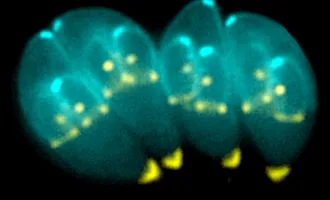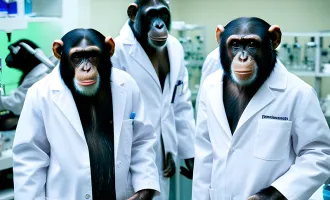
Bat Viruses, Cancer Exosomes, Bridge Birds
Sometimes, you just have one of those weeks. Those weeks when you have to be in lab at 7 o’clock in the morning to start a 14-hour experiment one day, attend three meetings and run a flow experiment the next day, and split thirty plates of cells and run seven gels the third day. You know what I’m talking about. You’re just barely keeping up with your overextended lab schedule, so there’s no way you can keep up with STEM news on top of it all -- maybe you glance at a few abstracts on PubMed and called it a day, and I commend you for it. [Enter Messenger] But these last couple of weeks have been exploding with interesting science and tech news, and while I’m only going to catch you up on a few interesting ones, I’ll add that it was not easy to choose.
Bats and Disease: The only infectious disease making headlines lately has been Ebola. Where does it come from? Scientists have found that deadly viruses are disproportionately harbored by bats: Ebola, SARS, rabies, and others. What’s more, bats are often the predominant source of disease transmission to humans. They can pass the virus to humans indirectly through other animals (gorillas, chimps) that encounter their droppings or directly through bites or when people eat them.
What's so special about bat biology? A 2013 publication in Science from the groups of Lin-Fa Wang and Jun Wang sought to address this through comparative genomics. They discovered evidence of positive selection of genes involved in DNA damage repair pathway and innate immunity. Elevated activity of both these processes could explain why bats can harbor deadly viruses without contracting disease as well as their low cancer rates. The authors postulated that these genetic changes were selected for during the origin of flight, which requires much higher metabolic rates and thus caused more cellular damage.
Another hypothesis, from a 2014 publication in Emerging Infectious Diseases, is that flight may generate enough heat to mimic a fever, decreasing viral load, and an article in The Washington Post this week says that a light workout when you have a head cold can be beneficial by boosting your immune system, so maybe bat evolution can be their proof of concept. The bottom line is that bats have unintentionally developed super powers, and we either need to evolve human flight to keep up, or stay well away from them. References: Wired, Slate, Science.
Exosomes and Cancer: So, about exosomes. At one time, they were thought to be vesicles passively sloughed off from cells, with no special purpose. Recently we’ve come to appreciate that they are in fact a mechanism of intercellular communication, an active secretory mechanism that delivers protected cargo to other cells. It’s also known that cancer patients have elevated levels of exosomes, but research is only starting to address the implications. In an exciting ahead-of-print publication in Cancer Cell, the Kalluri lab showed that when they mixed exosomes from cancer patients with normal human mammary epithelial cells and injected them into mice, they formed tumors.
Just in time for Halloween, I'd say. I mean, you mix cargo-carrying vesicles and cells that shouldn’t give rise to cancer, and all of a sudden you get cancer? And the source of exosomes is key, because they didn’t get tumors when mixing those cells with healthy donor exosomes. The mechanism is through specific microRNA cargo in cancer patient exosomes. References: Cancer Cell, Nature News & Comment
Birds of the Bay Bridge: To finish off on a lighter note, I’d like to touch on Bay Area ecology. Living in a city, we often forget about our interface with the natural world. However, this area has a natural ecology that we’re constantly butting up against. In recent news, there's been some struggling with cormorants.
“Cormorants don’t get a lot of love,” says my friend Kate Wyman, graduate student in Conservation Biology at the University of Minnesota, Twin Cities. They like to live in human environments, they eat a ton of fish, and they’re not the prettiest of birds. “As migratory birds, cormorants receive federal protection under the Migratory Treaty Act. Some of those protections have been relaxed in recent years… so they don’t come into conflict with other natural resources or economic interests.”
The problem for San Francisco is that double-breasted cormorants have been living on the Bay Bridge since 1984. . . and it is being demolished. Caltrans needs to lure those cormorants from the old bridge to the new bridge before mating season starts again in April; if the birds lay eggs on the old bridge, Caltrans will have to halt demolition until mating season is over in August. The cost of speeding up efforts has cost Caltrans millions: they’ve built special bird condos with nests on the new bridge, used bird decoys and recordings, and thrown nets over sections of the old bridge. So when you’re driving on the new bridge and look over at the half-disassembled old bridge, keep in mind that there are many forces at play – and do some fast-paced bird watching while you’re at it! I’ll leave you with a fun fact about cormorants: due to differences in their oil-producing uropygial gland, their feathers are less waterproof than other birds, so they have to stretch out their wings to dry out after every fishing dive. References: SFGate, Gizmodo, Kate Wyman.


